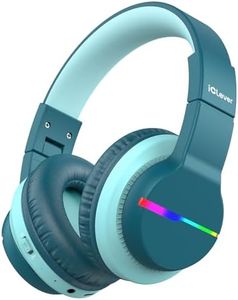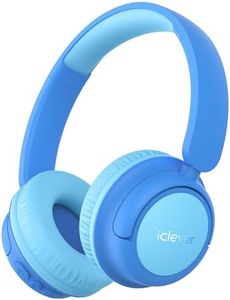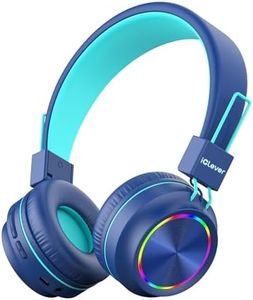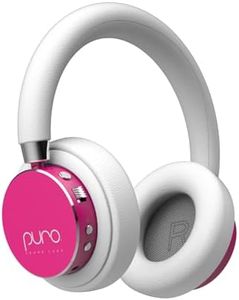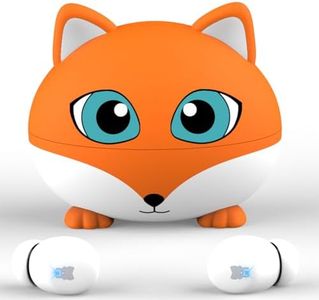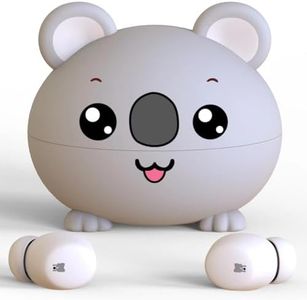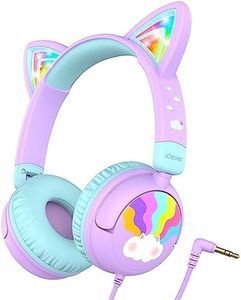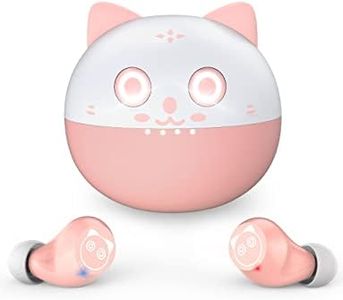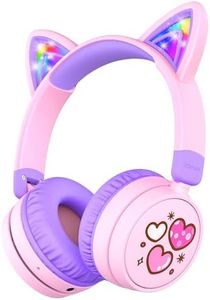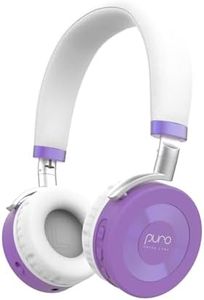We Use CookiesWe use cookies to enhance the security, performance,
functionality and for analytical and promotional activities. By continuing to browse this site you
are agreeing to our privacy policy
10 Best Earbuds For Kids
From leading brands and best sellers available on the web.Buying Guide for the Best Earbuds For Kids
Choosing earbuds for kids requires a thoughtful approach, focusing on safety, comfort, and ease of use. Since children's ears are sensitive and smaller than adults', it's important to pick earbuds that not only provide a good listening experience but also protect their hearing and fit properly. Features like volume limits, a secure fit, and durability should be at the top of your checklist. Always keep in mind how and where your child will be using the earbuds—whether for school, travel, or entertainment—so you can prioritize the right features for their needs.Volume LimitingVolume limiting is a safety feature that restricts how loud the earbuds can go, usually capping the maximum sound level at around 85 decibels. This feature is crucial for kids because their hearing is more sensitive and prolonged exposure to high volume can cause permanent hearing damage. When comparing products, make sure that the earbuds advertise certified volume-limiting technology. If your child will use the earbuds for extended periods, during travel or online learning, volume limiting becomes even more necessary to prevent accidental damage to their ears.
Earbud Size and FitThe fit of the earbuds is about how comfortably and securely they sit inside your child’s ears. Children's ears are smaller, so ordinary earbuds might not fit well or could even fall out easily. Many kid-friendly models offer smaller earbud tips or come with different-sized silicon covers to accommodate various ear sizes. For the best comfort and safety, choose models that are specifically designed for kids or offer multiple tip sizes. If your child will be wearing the earbuds for long stretches, such as during a car ride or at school, a snug, pain-free fit is essential.
Durability and Build QualityDurability refers to how well the earbuds can withstand drops, tugs, and general daily use. Kids often handle items roughly, so look for earbuds made with sturdy materials and reinforced cables or connections. Some models are also water-resistant or have detachable cords to reduce breakage. If your child tends to be rough with their belongings or will use the earbuds on the go, prioritize models that are known for their toughness.
Wired vs WirelessWired earbuds plug directly into a device, while wireless (usually Bluetooth) models offer more freedom of movement but need regular charging. For younger kids who may lose small items easily, wired earbuds are simpler and harder to misplace. Older children might appreciate the convenience of wireless earbuds, especially if they use them for activities or sports. Think about your child’s age, how responsible they are, and when or where they'll use the earbuds to decide which type suits best.
Ease of ControlsEase of controls refers to how simple it is for a child to adjust volume, skip tracks, or pause the audio without needing adult assistance. Some earbuds have built-in buttons or touch controls on the cord or earpiece, while others are managed through the device they are connected to. For younger children, earbuds with larger, easier-to-find physical buttons are best. For older kids who are more tech-savvy, touch controls may be acceptable.
Microphone QualityThe microphone quality matters if your child will be using the earbuds for online learning, calls, or gaming. Some models have basic mics that are suitable for casual conversation, while others provide clearer sound that's better for talking in noisy environments or on video calls. If your child mainly listens to music or audiobooks, the microphone isn't as critical, but for interactive use, pick earbuds that mention having a quality built-in microphone.
